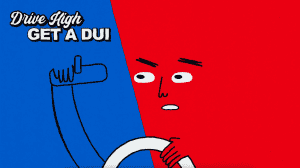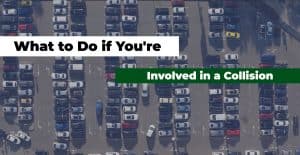Every metropolitan area comes with a unique set of driving challenges. With its unique terrain, sporadic weather patterns and rapid growth, Denver and its surrounding cities are no different.
While all motorists are affected by these factors, new drivers, and even the more seasoned drivers who have just relocated to Denver, may find them particularly challenging. In order to navigate safely down the road, it’s important to adapt safe driving skills to harmonize with the distinctive traits of the area.
If you’re a recently licensed driver, a parent of a student driver, or a new resident or visitor, these tips will help all parties stay safe when driving in the Denver metro area:
Plan for Congested Traffic
It’s no secret that the Denver metro area has been experiencing a huge amount of growth, a fact that has resulted in notable frustrations to communities. From soaring rental prices to concerns about preserving natural areas, the impact of the rising population is taking a toll.
One of the major areas being affected by the growth is traffic. With more cars on the road, the roads are naturally more congested, which makes commutes take longer. To stay safe around clogged roads, keep the following tips in mind:
- Leave early. Being in a rush can lead to risky driving behaviors, so always allow extra time to arrive at your destination.
- Utilize technology. Apps like Waze can direct you to the least crowded route and can notify you of any expected delays.
- Keep a safe distance between you and the car in front of you. In Colorado, the rule is that you should keep three seconds between cars in front of you, which is designed to prevent sudden braking and rear-end collisions.
- Use your signals. It’s always important to use your turn signals to communicate with other drivers, but it’s especially crucial when clogged roads force motorists to drive so close to one another.
- Avoid weaving in and out of lanes. Zig-zagging in and out of crowded lanes in an attempt to move faster through traffic is dangerous, so try to stay in one lane as much as possible.
- Avoid distractions. Just because you’re stuck in lagging traffic doesn’t mean it’s a good opportunity to text, change radio stations, etc. Heavy traffic, even at a standstill, requires your full attention. It’s also courteous to promptly accelerate as soon as traffic lights turn green, so as to not stall vehicles waiting to turn. If you are distracted, you will hold traffic up even more.
- Remain calm. It’s natural to grow impatient when you’re stuck in slow moving traffic, but try your best to remain calm. Growing angry or irritable can lead to impulsive decision-making, and it can also create confrontational situations with other drivers. If a driver acts aggressively towards you, do not react, and avoid making eye contact.
Let the Mountains Guide You
In Denver and many of its surrounding areas, you can see the Rocky Mountains from almost anywhere. If you are ever unsure of your direction, remember that the mountains face west. For many locals, the famous Rockies serve as a beautiful reference point.
Take Advantage of the Light Rail
In many of Denver’s most popular areas, parking is pretty accessible. However, finding free or metered parking downtown can be exceptionally frustrating, and parking garages take advantage of this by charging hefty fees.
There are numerous light rail stations all over the city, and you can park your car for free at most of the stations’ parking lots. Even when parking is not free, the most you’ll pay is $4 every 24 hours, which is far more affordable than downtown rates. When there’s a big event going on or when it’s rush hour, this option is usually much faster than driving.
For light rail information relating to locations, schedules, and parking, visit the RTD website.
Drive Cautiously Around Bicyclists
The Denver metro area is home to countless outdoor enthusiasts, many of whom take their bikes out on the roads, especially when the weather is warm.
In Colorado, bicyclists are legally allowed to ride in the streets alongside traffic. They have the same rights and responsibilities as those operating vehicles, so it’s important to be cautious and respectful when driving alongside one.
For in-depth information, check out our article onhow cars and bikes can safely share the road.
Be Prepared for Sudden Weather Changes
Colorado weather is known for being erratic, and residents frequently recite a mantra that illustrates the rapidly changing forecast: If you don’t like the weather in Colorado, wait five minutes.
Because a breezy, sunny day can swiftly turn into rain clouds and golf ball-sized hail, it’s important to be prepared for sudden weather changes.
Here are a few pieces of advice to help you stay safe:
- Make sure your tires have adequate traction and are in good shape. Heat can slowly weaken the rubber, making your tires more susceptible to cracks.
- Check your tire pressure regularly. Severe cold weather can lower tire pressure, while heat can cause the pressure to expand. Abide by the pressure recommendations from the owner’s manual that came with your car.
- Keeping your car’s fluids at the proper levels can help prevent any weather-related issues. Check them regularly, or if you don’t know how, take them to a service provider who can do this for you.
- Always ensure your window-wipers work. Rain and snow storms can occur unexpectedly, and it’s both illegal and unsafe to operate a vehicle without working wipers.
- Check weather reports for the areas you’ll be driving through. There are also apps available that will give you real-time updates.
- Make sure your heat/AC work. Having working heat and air conditioning will keep you comfortable and safe when temperatures reach extreme lows and highs.
Be Careful Driving in the Mountains
Part of what makes the Denver metro area so alluring is that mountains are so readily accessible. Many Coloradans spend their free time going on long drives or embarking on camping excursions in the Rockies.
While driving in the mountains offers an incredible experience, the terrain can take some getting used to for new drivers or those who have no experience driving in this environment. In order to keep risk to a minimum, there are some safety measures to follow, such as:
- Only drive in the mountains if your vehicle is up-to-date on all maintenance and repairs. Navigating steep inclines and declines along with curvy roads takes more out of your vehicle than driving on city roads does. It’s especially important that your brakes are in solid shape and that your engine is protected from overheating.
- Keep your gas tank full. There aren’t many gas stations in mountainous areas, and you also use more fuel driving up inclines. If you see an opportunity to top off, take advantage of it.
- Don’t ride your brakes on a steep decline. Instead, lightly tap on your brakes to control your speed or shift into a lower gear.
- If your engine is struggling, turn off the AC. Using AC puts more strain on your engine and may cause it to overheat. This is especially important when driving on an incline.
- Before a severely steep incline or decline, shift to a lower gear. This can prevent you from over overworking your brakes and engine.
- Do not cut or hug corners. It’s important that a vehicle coming from the opposite direction has adequate space to turn.
- Be mindful of drivers behind you. If you are driving slowly and notice a long train of vehicles behind you, pull over in a turnout (or the right lane if applicable) and let them pass.
- Only pass with clear visibility. Never change lanes around a blind corner.
- Some mountain roads are extremely narrow and don’t offer room for more than one vehicle. Keep in mind that the vehicle traveling uphill has the right of way.
- If making a turn on an extremely narrow mountain road, be cautious of drivers coming from the other direction and drive slowly. If you can’t see around the corner, you can honk to let anybody approaching know that you are there.
- Bring paper maps if you’re unfamiliar with an area. Many mountain areas have spotty or non-existent cell phone service.
- Watch for wildlife. In the mountains, it’s not uncommon for wild animals to wander into the road, so stay focused to prevent a collision.
- Be mindful driving in high elevation. Those who are not acclimated to higher altitudes can feel dehydrated, nauseous and dizzy. Stay hydrated, and don’t push yourself past your limits.
- Make sure your emergency care kit is complete. Read more on this below.
Always Have an Emergency Kit In Your Vehicle
Unexpected things can happen on the road, and carrying an emergency kit in your vehicle at all times is a smart idea, especially if you plan to take trips to the mountains or other areas without cell phone service.
Here are some important items to include:
- Water
- Non-perishable foods
- Spare tire
- Jumper cables
- Car jack
- Set of tools
- Car charger/spare phone charger
- Flares
- Extra clothing layers
- Space blanket
- Flashlight and spare batteries
- First aid kit
- Ice scraper
- Kitty litter (for traction)
- Sunscreen
- Window washer fluid
- Weather-alert radio (This can give you updates on inclement weather if you don’t have any cell phone service.)
- Satellite messenger (This would allow you to call for assistance and alert authorities of your GPS location if you needed help in a remote location. It’s a good idea for anyone who plans to frequently drive through/to areas with no cell phone service.)
Take an Advanced Drivers Ed Course from a Denver Metro Driving School
Sometimes the best way to learn how to drive in a specific location is to learn from somebody who is an expert on both driving and the area.
If you want to gain the skills necessary to safely drive in Denver, the surrounding communities and the mountains, it can be beneficial to seek out a Denver metro driving school. Drivers education isn’t only for those who are looking to get their licenses; it can be beneficial for anyone looking to advance their current skill-set.
Advanced courses, such as a defensive skills class, can help you learn better emergency-response tactics, hazard prevention skills, and car maintenance abilities. When you choose to continue your education with a driving instructor from the area, you’ll also gain valuable insight and advice on how to safely navigate this unique region of Colorado.
Contact DriveSafe Driving Schools Today!
DriveSafe has been serving the Denver-Metro areas for over three decades, and we’ve worked hard to gain our reputation as Colorado’s most trusted driving school.
After successfully training over 75,000 students in the area, we know how to assist anyone interested in becoming a safe driver for life.
Contact us today to see how we can help you with your driving goals!










